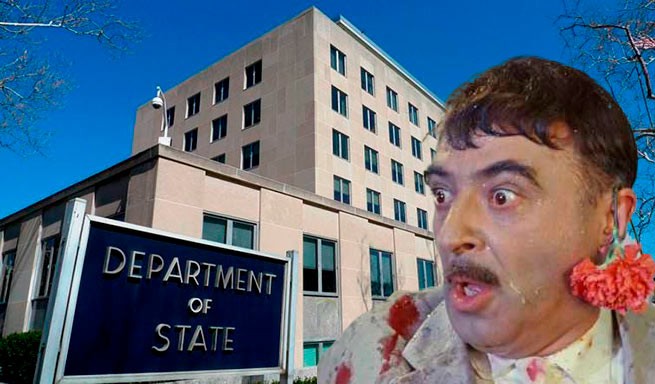India’s sacred river Ganges is overflowing with COVID-19 victims. Russian Athens also wrote about this, causing controversial comments from readers. What is really going on in a country experiencing the onslaught of the second devastating wave of the pandemic?
BBC journalists understood the situation, and this is what they managed to find out. Impartial facts.
In recent weeks, India has been under the aggressive impact of the second wave of the pandemic. The country has recorded over 25 million cases and 275,000 victims. Experts say that the real number of deaths is several times higher. This is silently confirmed by the bodies laid on the banks of the river and the funeral pyres that have not extinguished for days. Are these deaths included in the official statistics?
Residents of the northern state of Uttar Pradesh witnessed the discovery of hundreds of corpses – some in the river, others hastily buried in the sandy area adjacent to the Ganges, from where they invariably fall into the waters sacred to the Hindus. People fear that they are victims of COVID-19 and could be dangerous to people living nearby.
BBC journalists talked to eyewitnesses, local reporters, officials in various districts of Uttar Pradesh. They found that poverty, religious beliefs and, of course, the all-consuming “appetite” of the pandemic became the reason for what is happening, the bodies of the dead in the river.
For the first time, the inhabitants of the country experienced horror when on May 10, 71 bodies of the dead washed up on the banks of the Ganges. This happened in the village of Chausa (Bihar state), located near the border in the north of the country. The bodies were buried ashore, and Police Superintendent Neeraj Kumar Singh told BBC reporters that DNA samples had been taken from everyone. It is possible that the bodies were washed into the water after cremation, or they were deliberately thrown into the river.
Just a day after the terrible find, decomposed bodies were found on the shore, 10 km from Chausa, near the village of Gakhmar (Uttar Pradesh state). Residents say the bodies were washed ashore for several days, but the police ignored their appeals until reports of this hit local newspapers.
In the neighboring area of Ballia, residents also noticed dead bodies while bathing in the waters of the Ganges in the morning. Police, according to the Hindustan newspaper, removed the remains of 62 people. In the districts of Prayagraj, Kannauje, Unnao, Kanpur, the river bed is swollen with hillocks. Each of them is a body slightly covered with sand. In Mahadevi alone, at least 50 such burial mounds have been found.
The appearance of bodies in the river is also explained by religious traditions, although most Hindus prefer cremation. Some communities bury dead children in the river, unmarried girls who have died from a snakebite or infection (Jal Prava). If we add to this list of poor people who have died from coronavirus, whose relatives simply cannot afford to pay for cremation, the reason for the appearance of corpses in the Ganges becomes clear. Even in ordinary years, this is not uncommon, but not in such quantity.
The fact that so many bodies were found in the Ganges confirms the discrepancy between official statistics and the real number of deaths in the country from coronavirus. A colleague from Kanpur told the BBC about the same, claiming “a huge discrepancy between the official deaths from Covid-19 and the real numbers on the ground.” The journalist said that 196 people died from covid in Kanpur between April 16 and May 5, according to official figures. However, seven local crematoria carried out about 8,000 cremations during the same period, the journalist says:
“In April, all the electric crematoria were working around the clock, seven days a week. Even that was not enough, so the administration allowed the outside to be used for cremations using firewood. But they only accepted bodies that came from hospitals with Covid-19 certificates, and a huge number of people died at home without getting any tests. Their families took the bodies to the outskirts of the city or to neighboring areas such as Unnao. When they could not find firewood or a cremation ground, they simply buried it at the bottom of the river. “
Another journalist from Prayagraj says that many of the deceased were ill at home without passing the test, and their poor relatives simply did not have the money for cremation:
“It’s heartbreaking. All these people were someone’s son, daughter, brother, father and mother. They have earned some respect for death. But they did not even become part of the statistics – they died unknown and were buried by unknowns. “
The Ganges originates in the Himalayas. This is one of the largest rivers on the planet. Hindus truly believe that bathing in the Ganges cleanses them of all sins and uses the river water for religious rituals. Therefore, the discovery of decomposed bodies in the Ganges and on its banks caused a real shock in coastal villages. In addition, people fear that even bodies buried on the bank will fall into the river after the rain and the rise in the water level in it.
A week ago, the state government banned Jal Prava and promised financial support to poor families unable to afford cremation due to lack of money. Vipin Tada, Police Superintendent in Ballia, said they reported this to village council leaders so that they know bodies should not float in rivers and those who cannot afford cremation can seek financial help. In many places, the police pulled the bodies out of the river using sticks and boatmen who brought them to the shore. There they are buried in pits or burned on funeral pyres.
Gazipur District Magistrate Mangala Prasad Singh told BBC reporters that troops are constantly patrolling the mounds and cremation grounds to prevent bodies from being dumped into the water. But his team still finds one or two bodies in the river every day.






More Stories
Shocking report from Japanese scientists: “Cancer deaths increase sharply after mass Covid vaccination”
Study: Scientists have discovered why children are more susceptible to coronavirus
22 arrests and confiscations took place in Italy and other EU countries in the case of "covid" EU funds (video)